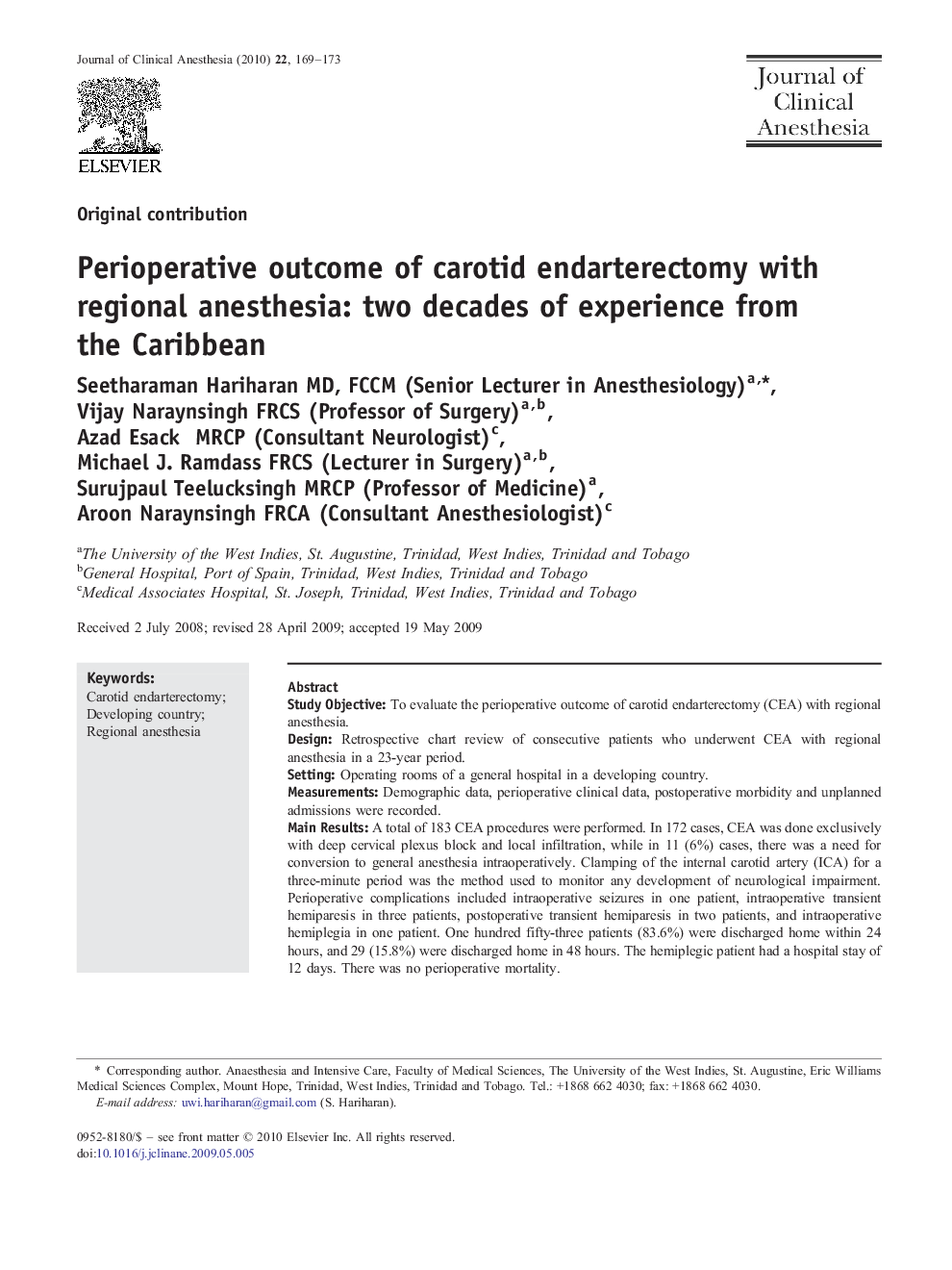| Article ID | Journal | Published Year | Pages | File Type |
|---|---|---|---|---|
| 2763176 | Journal of Clinical Anesthesia | 2010 | 5 Pages |
Study ObjectiveTo evaluate the perioperative outcome of carotid endarterectomy (CEA) with regional anesthesia.DesignRetrospective chart review of consecutive patients who underwent CEA with regional anesthesia in a 23-year period.SettingOperating rooms of a general hospital in a developing country.MeasurementsDemographic data, perioperative clinical data, postoperative morbidity and unplanned admissions were recorded.Main ResultsA total of 183 CEA procedures were performed. In 172 cases, CEA was done exclusively with deep cervical plexus block and local infiltration, while in 11 (6%) cases, there was a need for conversion to general anesthesia intraoperatively. Clamping of the internal carotid artery (ICA) for a three-minute period was the method used to monitor any development of neurological impairment. Perioperative complications included intraoperative seizures in one patient, intraoperative transient hemiparesis in three patients, postoperative transient hemiparesis in two patients, and intraoperative hemiplegia in one patient. One hundred fifty-three patients (83.6%) were discharged home within 24 hours, and 29 (15.8%) were discharged home in 48 hours. The hemiplegic patient had a hospital stay of 12 days. There was no perioperative mortality.ConclusionsRegional anesthesia is a safe method for CEA in a limited-resources setting, as it facilitates intraoperative clinical assessment of the effects of ICA clamping.
